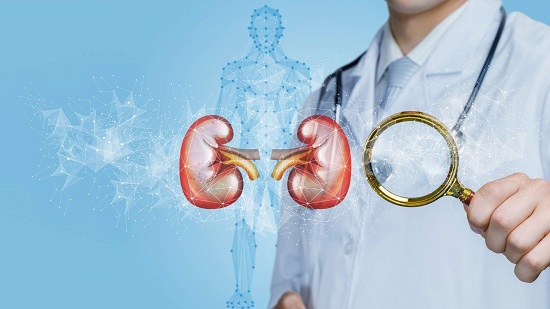
How to Diagnose Polycystic Kidney Disease: A Step-by-Step
Polycystic Kidney Disease (PKD) is a hereditary condition characterized by the growth of fluid-filled cysts in the kidneys. Early diagnosis is crucial to managing the disease effectively and improving quality of life. This step-by-step guide will help you understand how PKD is diagnosed and the importance of supporting kidney health through lifestyle changes, including incorporating the best supplements for kidney health and exploring herbal treatments for polycystic kidney disease.
What is Polycystic Kidney Disease?
Polycystic Kidney Disease (PKD) is a genetic disorder that causes numerous cysts to develop in the kidneys. These cysts are fluid-filled sacs that can grow large over time, impairing kidney function and potentially leading to kidney failure. PKD is one of the most common inherited kidney disorders, affecting millions of people worldwide.
Types of Polycystic Kidney Disease
There are two main types of PKD:
- Autosomal Dominant Polycystic Kidney Disease (ADPKD): This is the most common form of PKD, typically affecting adults. It occurs when a person inherits a defective gene from one parent. Symptoms often develop between the ages of 30 and 40, although cysts can start forming earlier.
- Autosomal Recessive Polycystic Kidney Disease (ARPKD): This is a rarer form of PKD and primarily affects children. For ARPKD to occur, a child must inherit a defective gene from both parents. Symptoms may appear during infancy or even before birth.
Causes of Polycystic Kidney Disease
PKD is primarily a genetic condition. It is caused by mutations in specific genes that regulate kidney cell growth. The two main genes associated with ADPKD are PKD1 and PKD2, while ARPKD is linked to mutations in the PKHD1 gene.
Step 1: Understanding Symptoms
PKD often begins subtly, but early symptoms can serve as warning signs. Be aware of the following:
- Persistent back or side pain
- High blood pressure
- Blood in the urine
- Frequent urinary tract infections (UTIs)
- Enlarged abdomen due to kidney swelling
If you or a family member exhibit these symptoms, consult a healthcare provider promptly.
Step 2: Reviewing Family History
PKD is primarily an inherited disorder. Autosomal Dominant PKD (ADPKD) is the most common type, typically passed from one parent, while Autosomal Recessive PKD (ARPKD) is rarer and requires genes from both parents. A detailed family medical history can provide critical clues for diagnosis.
Step 3: Physical Examination
A doctor may conduct a physical examination to check for signs of PKD, such as:
- Enlarged kidneys
- High blood pressure
- Abdominal tenderness
These findings, combined with symptom reports, can guide the next steps.
Step 4: Imaging Tests
Imaging tests are key to confirming a PKD diagnosis. Common tests include:
- Ultrasound: The most common and non-invasive method to detect cysts.
- CT Scan or MRI: These provide more detailed images of kidney structure and cysts, especially in advanced cases.
Step 5: Genetic Testing
Genetic testing can confirm PKD, especially if the diagnosis is unclear or for family planning purposes. This involves identifying mutations in the PKD1 or PKD2 genes, which are responsible for most ADPKD cases.
Supporting Kidney Health Post-Diagnosis
After a PKD diagnosis, managing the condition becomes a priority. While there is no cure, the following strategies can help slow disease progression:
- Adopting a Kidney-Friendly Diet
- Reduce sodium intake
- Stay hydrated
- Limit protein to reduce kidney strain
- Using the Best Supplements for Kidney Health Supplements can play a supportive role in maintaining kidney function. Some of the most recommended options include:
- Omega-3 Fatty Acids: Reduce inflammation and protect kidney health.
- Vitamin D: Supports overall kidney function.
- Coenzyme Q10 (CoQ10): Enhances cellular energy production and kidney resilience.
- Exploring Herbal Treatments for Polycystic Kidney Disease Certain herbal remedies may help manage symptoms and improve kidney health naturally. Popular options include:
- Astragalus: Known for its anti-inflammatory properties.
- Dandelion Root: A natural diuretic that may aid kidney detoxification.
- Turmeric: Contains curcumin, which has antioxidant and anti-inflammatory effects.
Monitoring and Follow-Up
Regular follow-up with a nephrologist is essential. They will:
- Monitor kidney function through blood and urine tests
- Manage complications such as hypertension or infections
- Adjust treatment plans as needed
Conclusion
Diagnosing Polycystic Kidney Disease involves a combination of symptom recognition, family history review, physical examinations, and advanced diagnostic tools. Early detection allows for better management strategies to slow disease progression and maintain quality of life. Incorporating the best supplements for kidney health and considering herbal treatment for polycystic kidney disease can complement medical care and support kidney health naturally. Consult your healthcare provider to tailor a plan that suits your needs.



